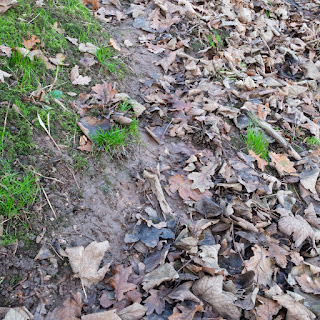It is always a pleasure to visit and support The Hepworth in Wakefield so it was with anticipation that my wife and I decided to go to the 'Prize for Sculpture Exhibition.
The Hepworth launched this award to celebrate its 5th year. It awards significant contributions to the development of contemporary sculpture by British or UK based artists at any stage in their career. The inaugural shortlisted artists are Phylida Barlow, Steven Claydon, Helen Marten and David Medalla. Each of the four has created an exhibition featuring new and recent work and each person's work had a gallery to itself.
David Medalla
David Medalla's work is inspired by places and people and is informed by complex combinations of memories and evolving relationships, and often reflects rhythms and systems found in the natural world. He uses a wide varity of media including painting, textiles, participatory work, performance and kinetic sculpture. Two of my favourite pieces in this exhibition were in this category:
Cloud Canyons 1964-2016 and
Sand Machine, Bahagari, 1963-2016
Cloud Canyons is made of wood, acrylic, an electric engine, water and soap. I a reservoir at the base of the sculpture the engine produces foam from the soap and water. As it is made it expands up the transparent plastic tubes and above their mouths, surface tension(?) keeping the column together for some time without support. As the column pf suds protrudes higher above the tubes it wafts and sways around in the slightest breeze. What it was supposed to represent I am not sure, but I enjoyed it and found it fun, which was, perhaps, its only purpose. It was certainly engaging.
Sand Machine (above) was made using sand, shell, necklace, bamboo, wood, wire, motor and electric wiring. As the motor rotated the sculpture the wires at the bottom made perfectly circular patterns in the sand at the bottom. Again great fun and reminded me somewhat of the sand patterns made with pendulums that I used to get pupils to experiment with. Abstract art driven by scientific principles.
Phyllida Barlow Untitled Screestage (2013)
This piece is huge and filled the room. It is made of metal, wood, and concrete. What it was supposed to represent, again I am not sure, but as with David Madella a lot of fun. Although visitors were asked not to touch it was so substantial it can't possibly have mattered and we were encouraged to walk around and under it. It reminded me of a sloping viewing platform such as in a cinema or auditorium or a gladiatorial amphitheatre. I a totally different direction it could also represent a building collapsed in the aftermath of an earthquake.
Helen Marten
Helen Marten is interested in how people build relarionships to objects. She references our coding of the visual world through her scuptures which are constructed like language. Much the same way as photographs can be read like a language. In her work the relationship between each element is as important and considered as the things themselves. Materials used include wood, ceramic, metal, leather, plastic and fabric. It was fascinating to go around each of these sculptures several times noticing yet more with each observation - even a broken eggshell!!
Steven Claydon
His sculptures comprise old, new, natural, man-made, modern and traditional objects. They refer to archaeology, anthropology, and historical artefacts. He references the past - whether twentieth century Modernism or primordial history - and science fiction. In this exhibition Claydon has engaged with the architecture of the gallery to present a series of sculptures and site-specific works that activate the space around them. Solid materials are often not what they seem and light, smell and sound are also employed.
Anthea Hamilton and Kettle's Yard
As well as the sculpture prize exhibition I was fascinated by the two galleries devoted to Kettle's Yard.Kettle's Yard is a series of cottages converted into a Modernist home by collector Jim Ede. The Cambridge gallery is currently closed for renovation and key items of the collection temporarily hosed at the Hepworth. That itself would have been interesting and fascinating enough, but 2016 Turner Prize nominee Anthea Turner, renowned for her art-pop, culture inspired sculptures and installations has produced an installation entitled Reimagining Kettles Yard. The exhibition comprises original works from Kettle's Yard along with Turner's own work inspired by the Cambridge collection.
I was enthralled by this exhibition, perhaps because Ede transformed his home by using Modernistart works juxtaposed alongside natural objects - something we endeavour to do in our own home, although we do not own any art works of such value; perhaps one day.








































































